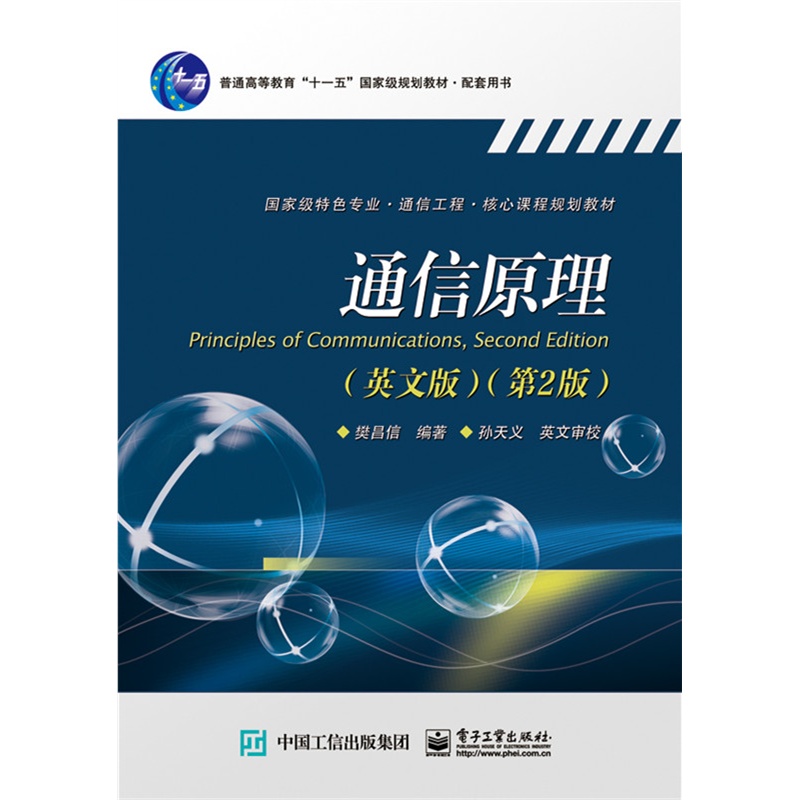- ISBN:9787121264238
- 装帧:一般胶版纸
- 册数:暂无
- 重量:暂无
- 开本:16开
- 页数:409
- 出版时间:2015-08-01
- 条形码:9787121264238 ; 978-7-121-26423-8
本书特色
on the basis of introducing the principles of analog communication,the book is focused on the principles of digital communication,and describes the communication system constitute,the specifications,the operation principles,the performance analysis,and the design methods. new communication systems and technologies developed recently are emphasized.
内容简介
本书是中文版《通信原理教程(第2版)》的英文版,简要介绍模拟通信原理的基础上,以数字通信原理为重点,讲述通信系统的组成、性能指标、工作原理、性能分析和设计方法。
目录
作者简介
樊昌信,西安电子科技大学教授、博士生导师、中国通信学会咨询委员会委员。先后被评选为中国通信学会会士、中国电子学会会士、(美国)电气电子工程师学会终身会士(IEEE Life Fellow)。发表过通信工程领域学术论文100余篇、著译10余本,其中《通信原理》(1980年)一书曾获电子工业部优秀教材特等奖、国家教委优秀教材奖。
-

思想道德与法治(2021年版)
¥6.8¥18.0 -

中医基础理论
¥51.7¥59.0 -

落洼物语
¥9.4¥28.0 -

习近平新时代中国特色社会主义思想概论
¥18.2¥26.0 -

毛泽东思想和中国特色社会主义理论体系概论(2021年版)
¥9.0¥25.0 -

当代中国政府与政治(新编21世纪公共管理系列教材)
¥36.0¥48.0 -

艺术学概论
¥14.5¥37.4 -

粒子输运数值计算方法及其应用
¥42.8¥58.0 -

毛泽东思想和中国特色社会主义理论体系概论
¥10.5¥25.0 -

智能控制
¥40.2¥56.0 -

社会学概论(第二版)
¥34.0¥55.0 -

法理学(第二版)
¥18.0¥50.0 -

全国中医药行业高等教育“十三五”规划教材中医养生学/马烈光/十三五规划
¥36.8¥55.0 -

基于python的从学习编程到解决问题
¥35.4¥53.8 -

水利工程监理
¥28.3¥42.0 -

新编大学生军事理论与训练教程
¥13.7¥39.8 -

世界现代史(1900-2000)
¥31.4¥80.0 -

水电站
¥24.4¥36.0 -

公路工程机械化施工技术-(第二版)
¥18.6¥32.0 -

香辛料原理与应用(第二版)
¥52.0¥68.0













